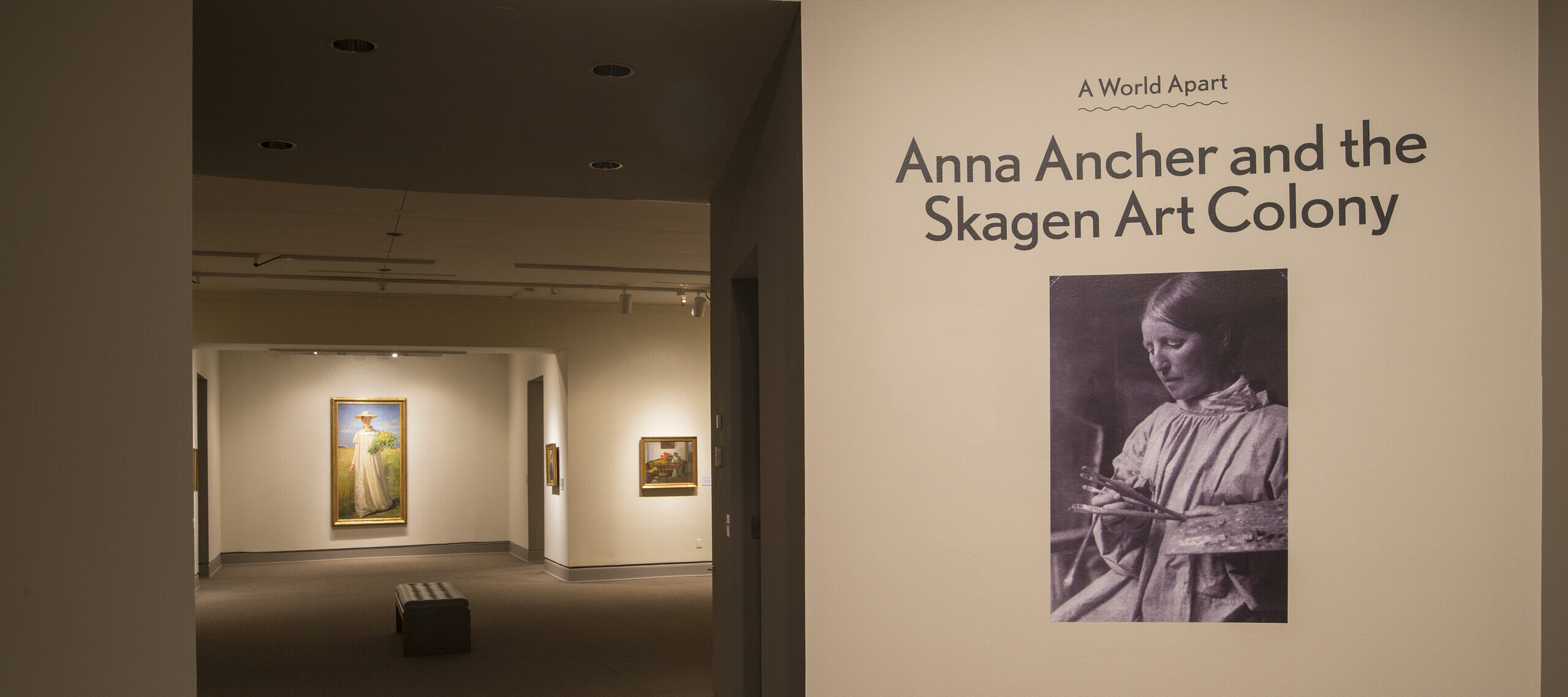A tragic figure in the circle of the Skagen art colony, Marie Triepcke Krøyer (1867–1940), famously considered the most beautiful woman in Denmark in her youth, was a talented painter whose artistic ambitions were upstaged by her relentless self-doubt and the celebrity of her marriage to the virtuoso Scandinavian painter P.S. Krøyer, the unofficial artistic leader of the artists’ colony at Skagen.

From early childhood Marie dreamed of being a painter, often studying the work of Krøyer (16 years her senior) in local collections. Although lacking confidence in her abilities, Marie boldly pursued artistic training. In the 1880s, she defied the Danish Royal Academy of Fine Arts’ refusal to accept women students by organizing Den Lill Skole (The Little School): a group of women artists who, rather than paying individually for expensive private training, shared the cost of renting a space to which they invited prominent male artists to critique their work. Den Lill Skole prompted the institution of the Art School for Women in 1888 as part of the Royal Academy.
At age 21, Marie traveled to Paris and studied under various French artists. There, she discovered the styles that would influence her work—Impressionism and Naturalism—and forged a lifelong friendship with fellow student Anna Ancher.
It was also in Paris that Marie unexpectedly encountered Krøyer. The two began a whirlwind romance and were soon engaged, much to the surprise of Danish society; it was long assumed that Krøyer would never marry, and rumors even spread that he abandoned a pregnant lover shortly before meeting Marie. Knowing her insecurities, Marie’s friends were wary of her engagement to such a celebrated artist, fearing that it would reinforce her self-doubt and lead to “artistic suicide.”¹ Regardless, Marie and P.S. Krøyer became Denmark’s “it couple,” marrying in 1889 and settling in Skagen.

Although Krøyer never discouraged Marie from painting, she felt artistically inferior and produced few paintings during their marriage. She envied the supremely confident Anna Ancher, who shared an artistic equality with her painter husband Michael due to their varied styles and subject matter. Of Marie’s few known paintings, only 20 remain, on small canvases, her self-portraits are the most revealing. In contrast to Krøyer ‘s most beloved paintings depicting Marie, his muse, roaming the beach unoccupied and ideally beautiful, Marie’s 1889 Self-Portrait, painted with thick, impressionistic brushstrokes, reveals a different woman: somber and straightforward, with half her face concealed in shadow, suggesting a darker side to her character. Her other subjects included children and domestic women.
